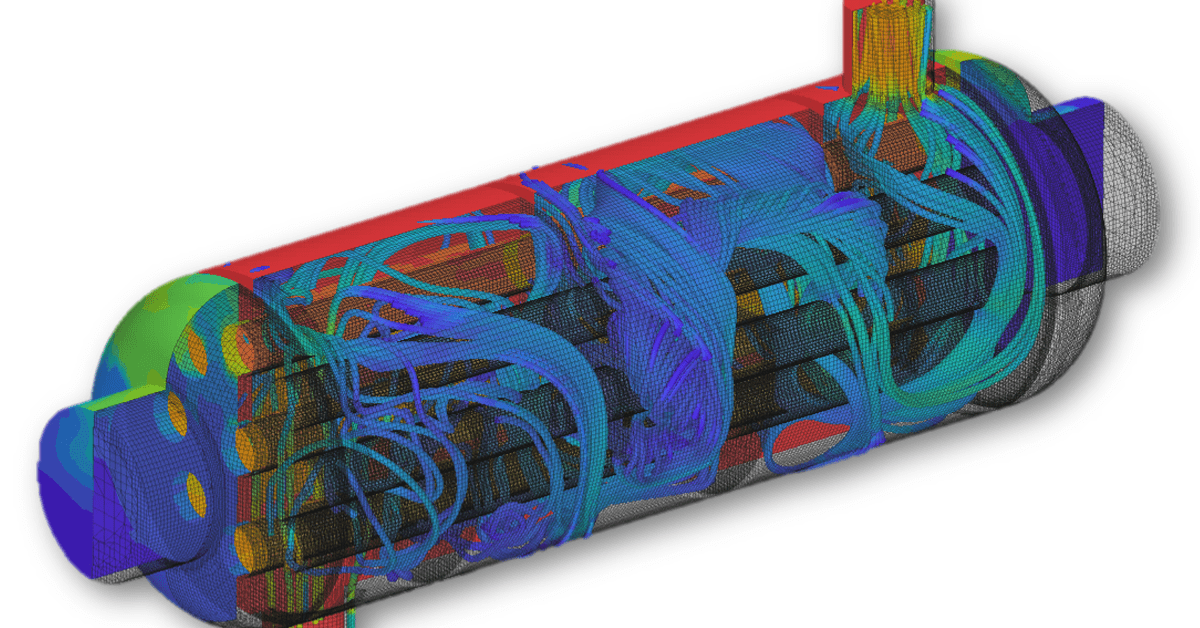In real world flows, we often see combined modes of transport phenomena in which momentum + heat transport occurs simultaneously within and between fluid and solid regions. Systems that involve thermal energy transport within multiple fluid and/or solid regions, and possess energy exchange at the defined interface of the domains, are often called called conjugate heat transfer (CHT) systems. CHT is a common within electronics, electric motors, all types of heat exchangers, power generation systems, automobile clutches, and heterogenous catalytic processes (just a short list). Most of these CHT systems contain complex modes of physics including natural/forced convection, conduction, radiative heat transfer, energy generation/consumption, and contact resistance at domain interfaces. The additional inter-coupled physics, make CHT problems particularly difficult to solve within a CFD software.

The additional complexity of multiple regions and multiple physics presents two challenges. The first challenge is the domain discretization of the multiple regions within the simulation. We are required to capture the volumes themselves and also the (potentially) intricate interfaces between multiple domains. Secondly, we are presented with physics occurring on separate domains that are coupled at domain boundaries.
Solving the Meshing Challenges
HELYX is provided with a hex-dominant cut-cell mesher as part of the standard release of the software suite. It is a fully-capable meshing application to enable you to:
- Create better meshes with mesh quality checking to ensure that the mesh produced within HELYX will run best with HELYX solvers. This is one of the most important (and probably one of the most underrated) features, since you are ensured that meshes are hexahedra dominant, can possess less skewness (just to name one quality metric), and generally perform better for complex simulations.
- Resolve physics and surface features with easy control over surface, volume and feature line mesh refinements.
- Resolve boundary layer physics with layer addition controls that allow simulations to capture local gradients in momentum, energy, and mass transport that may create a local boundary layer within the domains.
- Create and manage multi region meshes with features that enable users to easily mesh several regions at once; split and manage these separate regions; and automatically map the interfaces between regions within the graphical user interface.
Additional enabling features of the mesher within HELYX are discussed in a previous webinar (Introduction to Meshing with HELYX).
Solving the Modelling Challenges
With multiple regions where physics are governed by multiple transport equations, as well as the coupling at domain interfaces, simulation complexity increases. HELYX can overcomes these challenges by:
- Increasing stability and speed to convergence with implicit region coupling and monolithic matrix technology designed to perform faster and more stability than a traditional partitioned approach. In some cases, more than 100x speedup is seen compared to a partitioned approach used in standard OpenFOAM.
- Automatically configuring inter-region coupling physics on multi-region meshes and easily setup heat transfer resistance models within each inter-region patch pair.
- Managing relationships between regions more easily with an intuitive interface within HELYX GUI. You can configure numerics, monitor solutions, evaluate in-situ data (e.g. y+, vorticity, etc.), on a region by regions basis
- Extracting important design information with the new post-processing capability within HELYX view tab.
Solving both the CHT meshing and modelling challenges means HELYX can compete with other commercial codes in terms of solution speed, stability, and overall features. The fully implicit inter-region coupling is ready for industry and is a game changer for our customers.
Learn More by Watching the Webinar
This webinar introduce you to meshing and simulating conjugate heat transfer problems using the implicit region coupled solver within HELYX. A brief overview of the differences between a partitioned approach and a fully-implicit region-coupled approach within HELYX will be covered. To show how HELYX compares to other commercial software, several customer success stories will be presented. By the end of the webinar you will be able to understand how to mesh, setup, and solve conjugate heat transfer multiphysics problems within HELYX.

